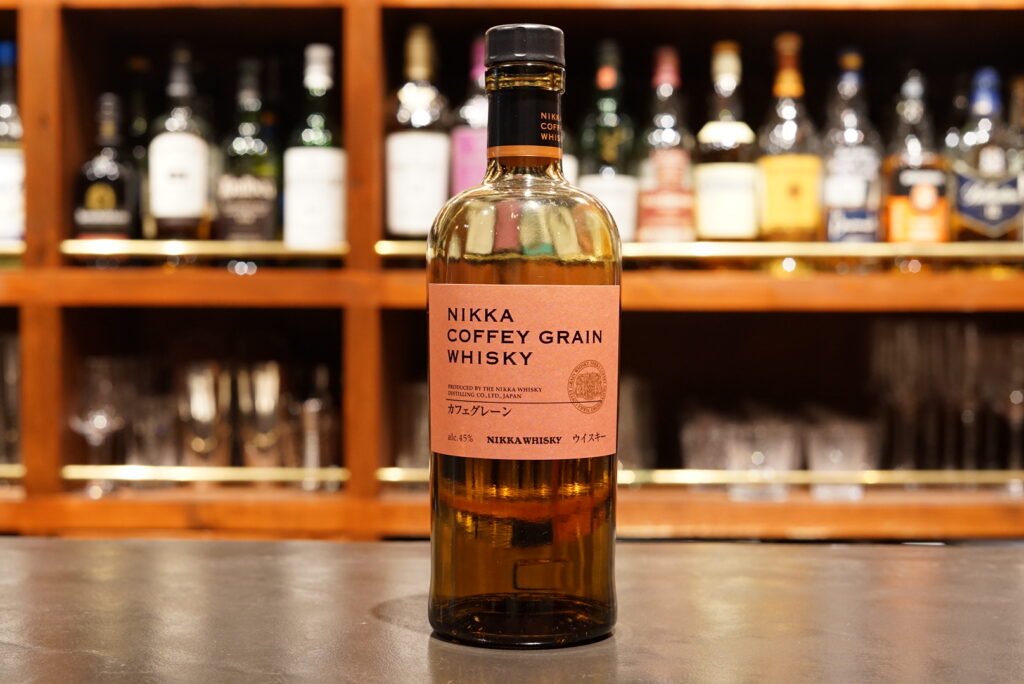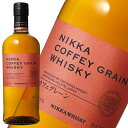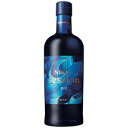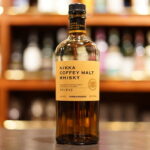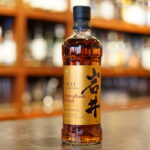“Nikka Coffey Grain” is a deeply flavored grain whisky made using the world’s rarest continuous cafe distiller. Compared to ordinary grain whisky, the sweetness derived from the raw materials is more pronounced because of the café method.
1. Manufacturer
Nikka Whisky Co.
| Establishment | 1934 |
| Head office location | 4-31, Minami-Aoyama 5-chome, Minato-ku, Tokyo 107-8616, Japan |
| Owned distilleries | Yoichi Distillery, Miyagikyo Distillery, Ben Nevis Distillery |
2. Distilleries
Yoichi Distillery
| Location | 7-6 Kurokawa-cho, Yoichi-cho, Yoichi-gun, Hokkaido 046-0003, Japan |
| Start of operation | 1936 |
“The Yoichi Distillery” in Hokkaido is known as the Scotland of Japan. It was established in 1934 by Masataka Taketsuru, also known as Massan, whose predecessor was Dainippon Fruit Juice Co. Masataka Taketsuru believed that a place similar to Scotland Cool and humid climate, rich water source and clean air Masataka Taketsuru believed that a place with all of the characteristics of Scotland was essential for making ideal whisky, and he chose Yoichi, located at the base of the Shakotan Peninsula, west of Otaru, from among various candidate sites.
Masataka Taketsuru’s goal for his first distillery was to create a heavy and powerful malt whisky. He was determined to replicate the whisky-making methods he had learned at the distilleries of Scotland, without compromise. The symbol of this commitment is “direct coal distillation”. This distillation method is based on the method of the Longmorn distillery, where he learned it himself. If it is necessary to make genuine whisky, we will protect it even if it is inefficient. Such passion, which can be said to be the origin of Nikka Whisky, and Masataka Taketsuru’s dream have been handed down to this day.

 |
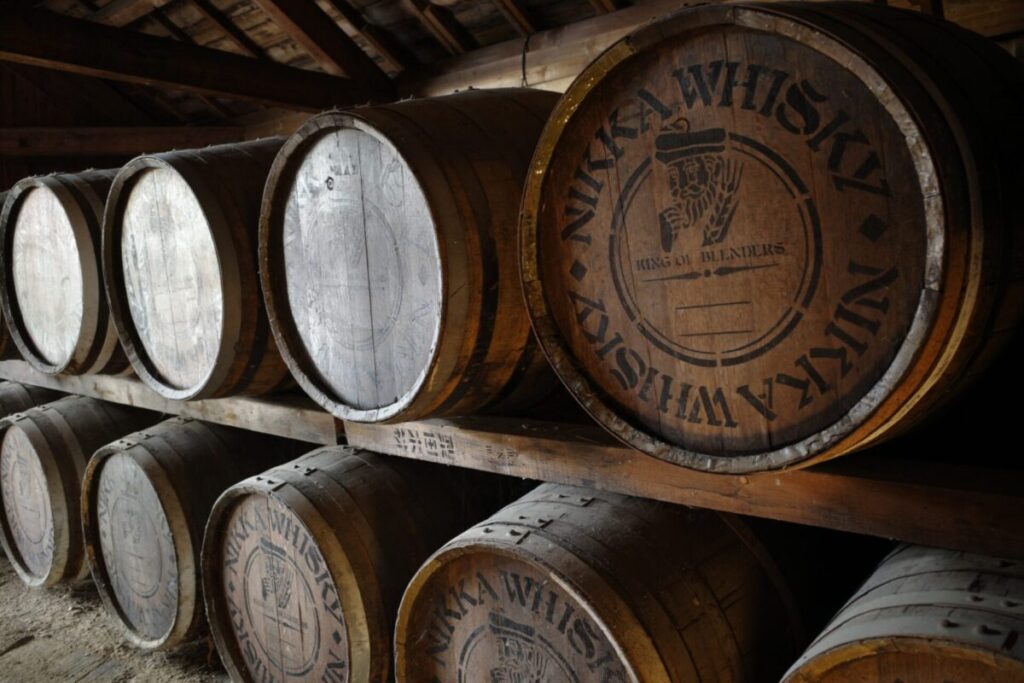 |
Click here for the official website of Yoichi Distillery.
For more information about Yoichi Distillery, please see this article.

Miyagikyo Distillery
| Location | 1 Nikka, Aoba-ku, Sendai City, Miyagi Prefecture, 989-3433, Japan |
| Start of operation | 1969 |
It has been about 30 years since the first distillery was started in Yoichi, Hokkaido. Masataka Taketsuru, who believed that “whisky becomes richer and more flavorful by blending multiple raw materials from different distilleries” desperately needed a second distillery.
Taketsuru chose Miyagi Gorge in Sendai, Miyagi Prefecture. It is a lush green gorge blessed with two clear streams, the Hirose River and the Shin River. When Taketsuru visited this place for the first time, he drank some of his Black Nikka in the clear water of the Shin River and confirmed the taste. It is said that he decided to build the distillery on the spot. The pride of the Miyagikyo distillery is its “café-style continuous distillation machine” .
At the time of its introduction, this distiller was already considered obsolete. Because it was an old-fashioned distillation machine, it was prone to leaving behind miscellaneous flavors, but Taketsuru chose to use this old-fashioned distillation machine because the technology could transform them into the original aroma and sweetness of the ingredients. At the Miyagikyo Distillery, people who have inherited Taketsuru’s passion are still trying to make whisky more delicious.
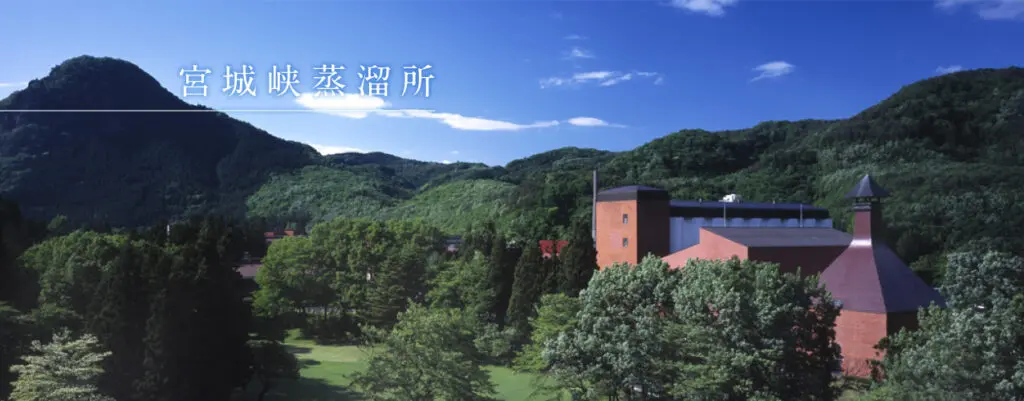 |
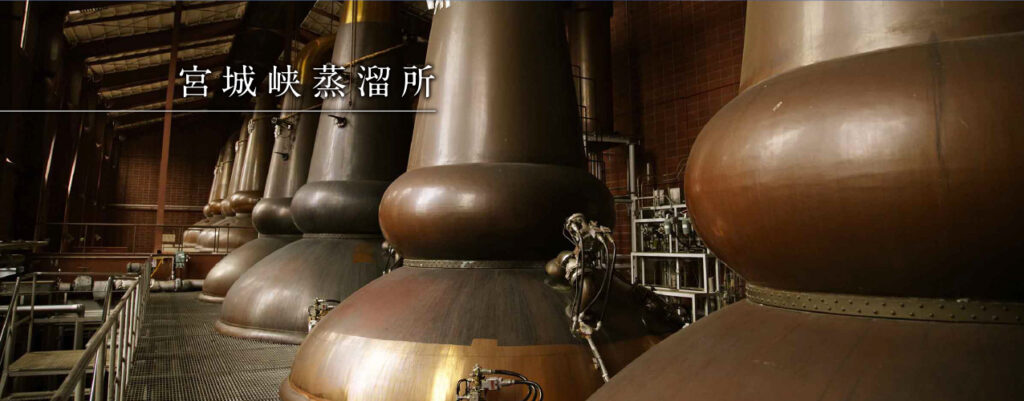 |
Image credit: Miyagikyo Distillery|NIKKA WHISKY
For more information on the Miyagikyo Distillery, please see this article.

The characteristics of Nikka’s blended products consist of the raw liquor produced by three distillers (machines).
One is the straight pot still at the Yoichi distillery. The first is the straight pot still at the Yoichi distillery, which is currently the only one in the world that uses direct coal-fired distillation to produce a heavy and powerful malt. It is a full-bodied malt with plenty of peat and smoke. The other is the bulge-type pot still at the Miyagikyo distillery. The gorgeous and fragrant malt produced by steam indirect distillation is a completely different type of malt from Yoichi. Comparing Yoichi to the Highlands and Miyagikyo to the Lowlands, each distillery produces whisky with its own unique characteristics.
The founder of the company, Masataka Taketsuru, said, “If we don’t start using grain whisky, Japanese whisky won’t be able to be called a full-fledged whisky” . It is indispensable in balancing the unique malts of Yoichi and Miyagikyo. This is then brought together by the blending techniques that have been handed down from Mr. Taketsuru.
The Nikka Whisky “Miyagikyo Distillery” possesses a traditional “café-style continuous distillation machine” . The current mainstream continuous distillation machine can increase the degree of alcohol purification, but it also removes the flavor components. On the other hand, the “café-type continuous distillation machine” owned by Nikka is an older type that is less efficient in distilling, but has the characteristic of retaining the aroma and ingredients derived from the raw materials in the distillate. This distillation machine was invented around 1830, and is called a “café still” after its developer, Enias Café. Masataka Taketsuru, the founder of Nikka Whisky, had a dream to introduce the café-type continuous distillation machine to his factory and make authentic blended whisky. His wish came true, and the café still, which was installed in 1963 and began full-scale operations the following year, was an “extremely old-fashioned” type even for its time. This was Masataka’s persistence in seeking real taste.
3. Product name and photo
Nikka Coffey Grain
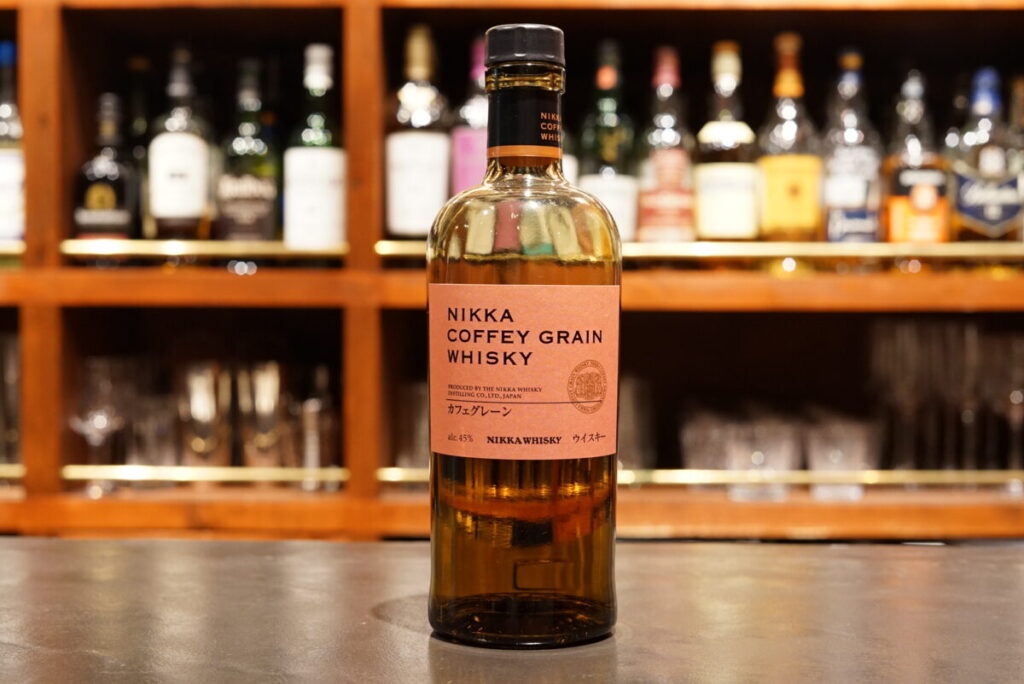
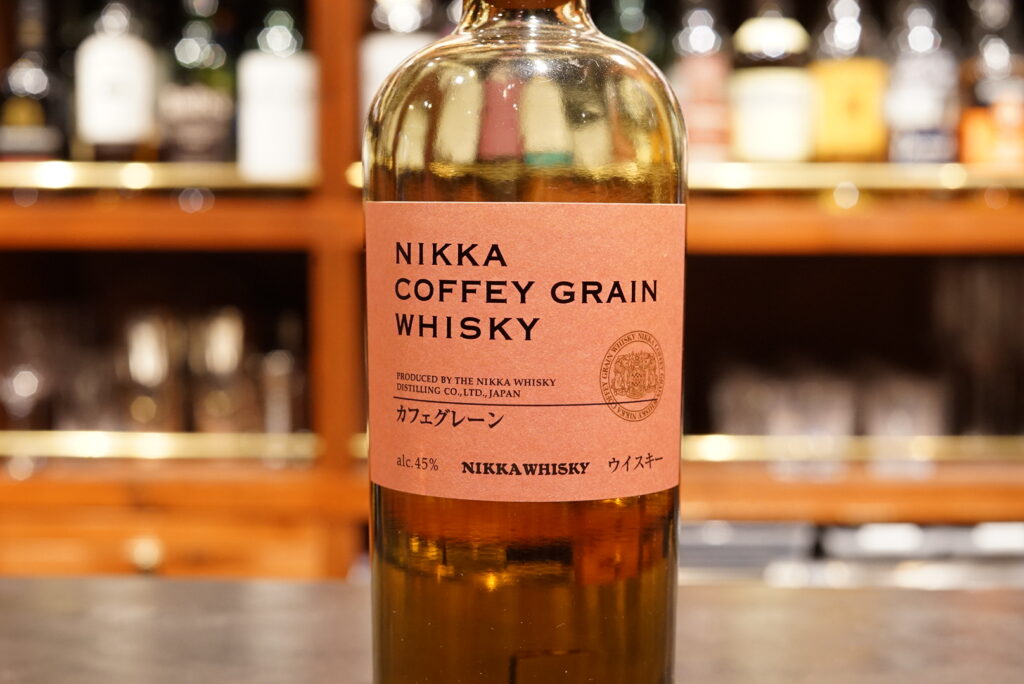 |
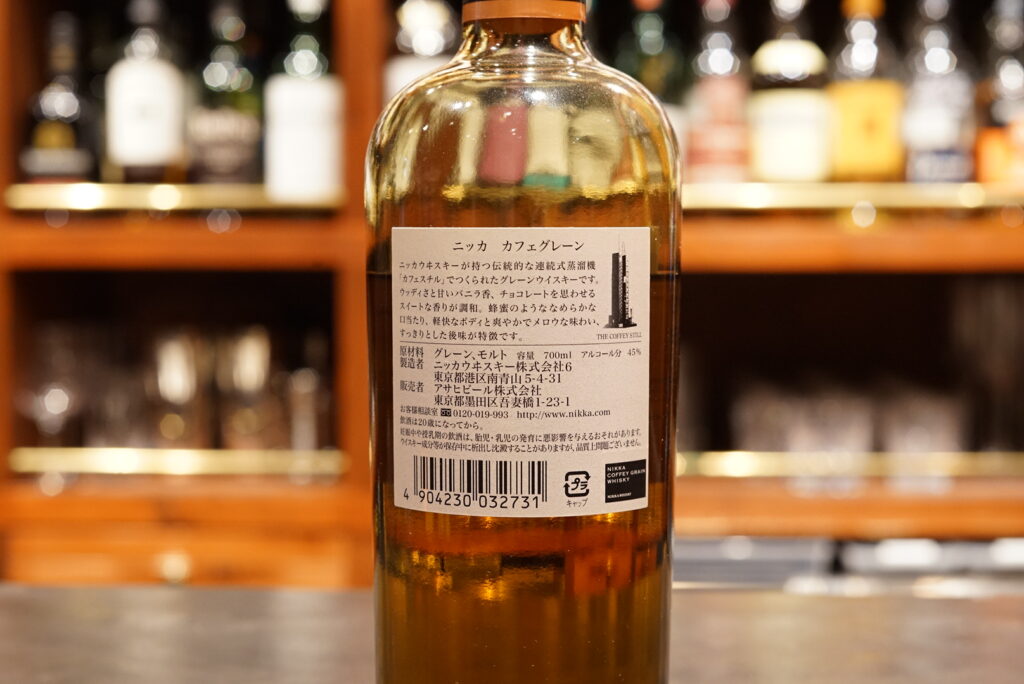 |
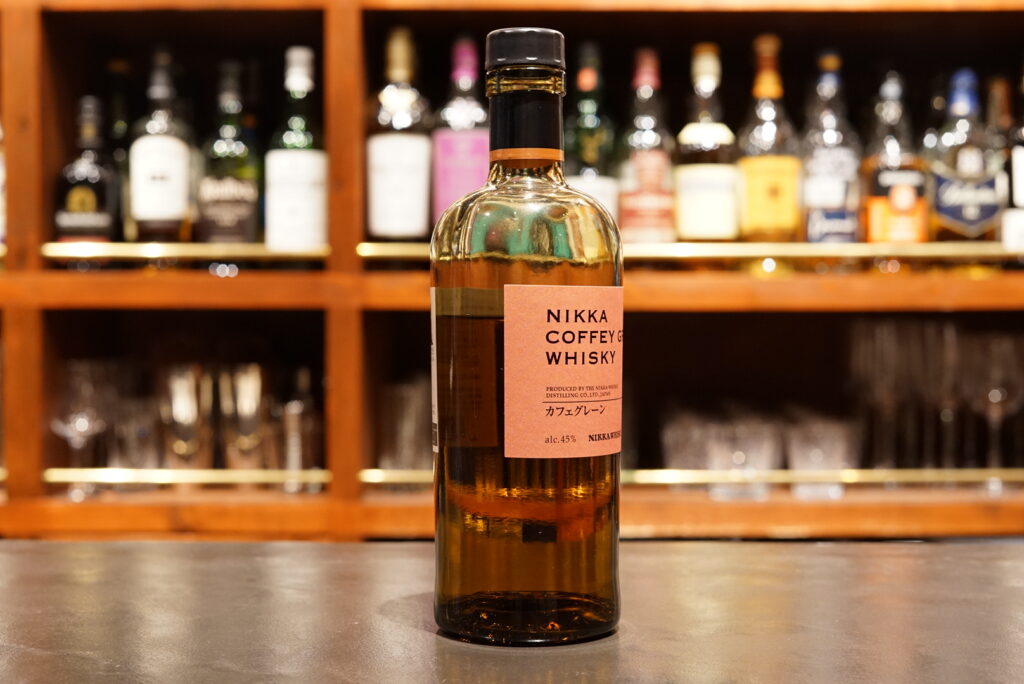 |
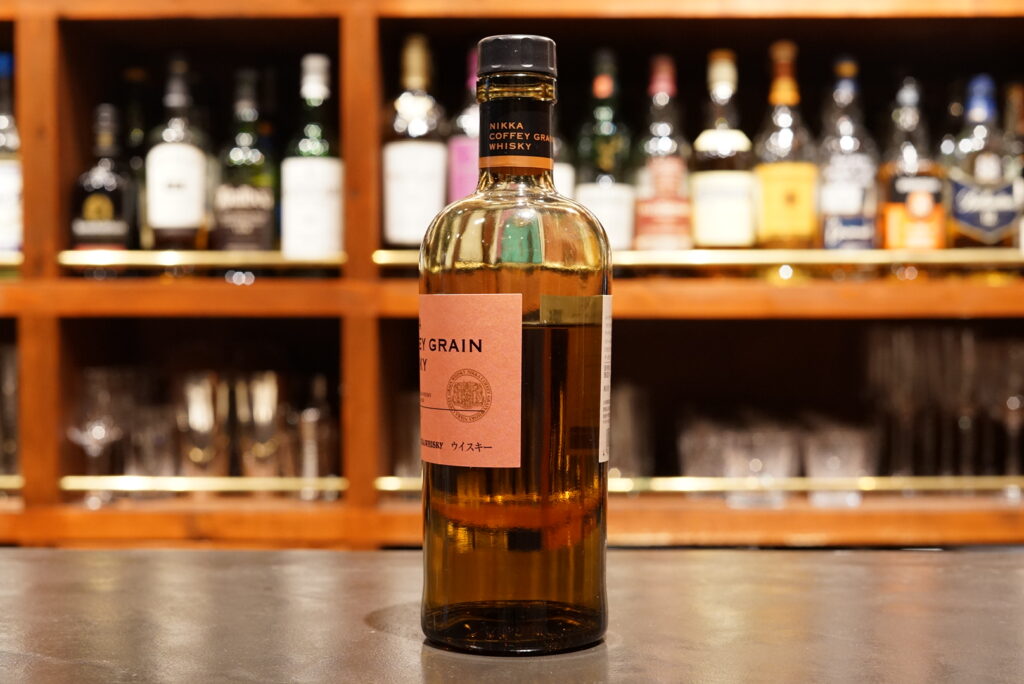 |
4. Characteristics
Sweet aroma and smooth mouthfeel produced by traditional continuous distillation.
The mellow aftertaste of Nikka’s blended whisky can be said to be due to the subtle sweetness of this “café grain” .
If you dare to taste it straight, you will find a gorgeous aroma (honey, apple, esters) with almost no alcohol pungency despite the 45 degrees alcohol content. There are also nutty and woody notes from the back.
The taste alternates between sweet flavors of apples and honey and astringent flavors like chocolate.
It is characterized by a sweet aroma and smooth mouthfeel that is unique to the cafe style.
4-1. Tasting Notes
| Aroma | Woody vanilla aroma with a cookie-like aroma. Sweet aromas of custard cream, chocolate and burnt sugar. |
| Taste | Clean and light on the tongue, with woody vanilla and sweet honey-like flavors. |
| Aftertaste | Disappears cleanly with a light body. |
4-2. Product Specifications
| Alcohol content | 45% |
| alcohol category | Blended Whisky |
| Barrel type | Cask type |
| Contents | 700ml |
| Number of bottles sold | – |
| Suggested retail price | 6,600 yen (tax included) |
| Release date |
Launched in September 2012 as a Europe-only product |
Awards received
2016 ISC Gold Award
6. Price
6-1. Manufacturer’s suggested retail price

| Product name |
Nikka Coffey Malt |
| Capacity | 700ml |
| Suggested retail price | 6,600 yen (tax included) |
6-2. Resale price on Mercari
The resale price on Mercari is Around 8,000 yen to 9,000 yen The resale price on Mercari is as follows.
(*As of 3/30/2021)
6-3. Sold price on Yahoo Auction
The current price on Yahoo Auction is Lowest bidder: 6,000 yen, highest bidder: 12,501 yen, average bidder: 7,569 yen (*as of March 30, 2021)
6-4. Rakuten, Yahoo Shopping, Amazon
It is also sold at Around 9,000 yen to 12,000 yen (*as of March 30, 2021) The current price on Yahoo!
6-5. Price offered at BAR Shinkai
At “BAR SHINKAI” , which is operated by this site, it is available at 1 cup, 45ml: 1,760 yen (tax included) (*As of March 30, 2021)
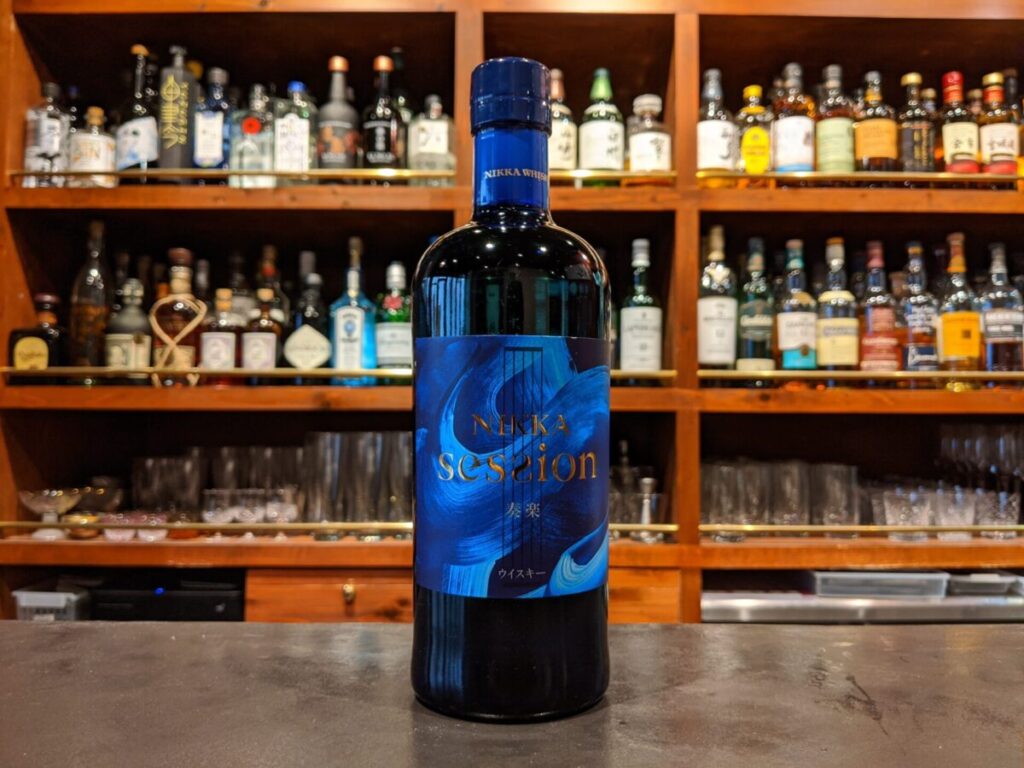
Lastly: Recommended Books on Japanese Whisky
If you want to learn more about Japanese whisky, which is a global trend, we highly recommend these books.
(1).Whisky Galore Vol.29 December 2021 issue
In the December 2021 issue of Whisky Galore, published by the Whisky Culture Research Institute, we report on 11 Japanese craft distilleries, including some that are open to the public for the first time, under the title of “Japanese Whisky Craft Frontline,” the first of three consecutive issues. Why did the popularity of Japanese whisky and the craft boom occur? We will examine with interviews. Chichibu Distillery / Chichibu No.2 Distillery / Mars Shinshu Distillery / Mars Tsunuki Distillery / Kanosuke Distillery / Hioki Distillery / Ontake Distillery / Osuzuyama Distillery / Kaikyo Distillery / Hanyu Distillery / Konosu Distillery
(2). Japanese Whisky as an Education for Business
This is a book written by Mamoru Tsuchiya, a world-famous whisky critic and representative of the Whisky Culture Research Institute, titled “Japanese Whisky as a Culture that Works for Business” .
The book covers the basics of whisky, the introduction of whisky to Japan, the birth of Japanese whisky, advertising strategies and the rise of Japanese whisky, and the current rise of craft distilleries. This is a book that summarizes Japanese whisky in a very easy to understand way.
(3). Whisky and I (Masataka Taketsuru)
Masataka Taketsuru, the founder of Nikka Whisky, devoted his life to brewing whisky in Japan. This is a revised and reprinted version of the autobiography of a man who simply loved whisky and talked about himself. The book vividly depicts the days when he went to Scotland alone to study as a young man and overcame many hardships to complete Japanese whisky, as well as his companion, Rita.
(4). A Letter of Challenge from a New Generation Distillery
Launching in 2019. With the world experiencing an unprecedented whisky boom, what were the managers of craft distilleries thinking and what were their thoughts as they took on the challenge of making whisky? This book tells the stories of 13 craft distillery owners, including Ichiro Hido of Venture Whisky, famous for his Ichirose Malt, who inspired the birth of craft distilleries in Japan.
(5). Whiskey Rising
This is the Japanese version of Whisky Risng, published in the US in 2016, with much updated content. Not only does it describe the history of Japanese whisky in detail, but it also includes data on all the distilleries in Japan, including the craft distilleries that have been founded in recent years. The book also includes descriptions of the legendary bottles that have been released, as well as information on bars where Japanese whisky can be found.

